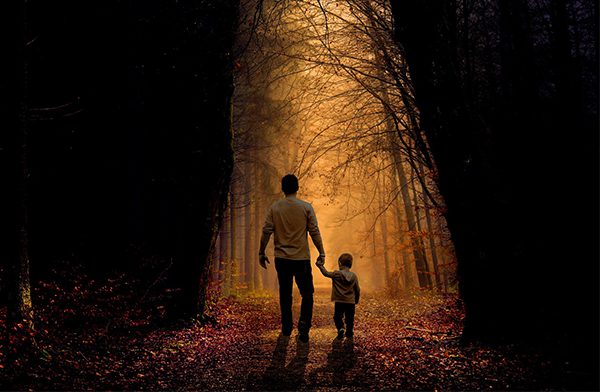
Written by Alexandra Preston
Post-Traumatic Stress Disorder (PTSD) is a condition where our natural response to threat is constantly heightened. It is characterised by recurrent flashbacks, including nightmares; avoidance of reminders; and emotional over-reactivity. Any traumatic event can trigger it, such as the death of a loved one or domestic violence. As PTSD can be debilitating, how can we heal from it, or if we have experienced trauma, how do we avoid developing it?
How Can We Prevent PTSD?
“Sometimes, we can’t avoid experiencing traumatic events, but we can prevent it from developing into a disorder.” Emma McLaughlin, our Naturopath, states that:
“Nervous system support herbs can be a wonderful way to support the body. Rhodiola and kava have been shown in studies with PTSD patients to support and regulate the parts of the brain which respond to stress and trigger anxiety. Other herbs include chamomile, skullcap, passionflower and lemon balm. Many are safe for longer term use. Offering this alongside debriefing of event with a trained professional such as a psychologist supports both the mental and physical responses that occur with PTSD.”
Multiple studies have found that these herbs can reduce anxiety related to distressing events (Bone, 2003). For example, one trial found that kava extract significantly relieved anxiety, fatigue, and depression in patients waiting for medical test results. In another, chamomile helped 10 of 12 patients undergoing cardiac catheterisation sleep well, despite pain and anxiety related to the procedure. Rhodiola can help to relieve stress-related fatigue, sleep disturbances, irritability, poor appetite, and anxiety. Human trials and laboratory studies have found that it can reduce levels of cortisol, the stress hormone, while modulating neurotransmitters such as serotonin and dopamine.
Simon DuBois, one of our Psychologists and clinical director, states that it is important to “ensure that the person is supported in a quiet and restful space until they are out of the acute shock reaction. Let them know its ok to shake, tremble and/or cry. This is how a person discharges traumatic stress.” Deirdre Middlehurst, Clinical Psychologist at The Health Lodge, lists “supportive holistic care, ensuring safety, careful assessment to determine vulnerability, and close follow–up” as essential after a traumatic event.
What About Recovery?
While prevention of PTSD is possible, can patients who already suffer from the condition make a full recovery? Reine Dubois, our Clinical Director and senior Naturopath comments,
“Absolutely, however I believe an integrative approach is necessary for long-term successful recovery. Psychology; psychotherapy and psychiatry; somatic experience (SE); craniosacral therapy; acupuncture; lifestyle interventions such as exercise and nutrition; and naturopathic/herbal support would all be worth considering.”
As described above, herbal remedies can reduce the effects of trauma, and nutrients such as omega-3 fatty acids may help the brain heal. In the case of acupuncture, a study of 55 service members found that the acupuncture group experienced double the improvement in PTSD Checklist scores, and triple the progress in Clinician-Administered PTSD Scale scores, compared to usual care alone. Craniosacral therapy normalises the flow of cerebrospinal fluid and energy in the central nervous system. In a study of 157 patients with varying complaints who had received craniosacral therapy, three-quarters reported improvement and 70% reduced their medication, with anxiety identified as one particularly responsive condition.
Deirdre also believes that patients can make a full recovery from PTSD, “with enough time and resources…depending on the nature of the trauma(s), and the personality of the individual, 30-40 sessions of therapy would certainly bring them through most of the PTSD. Trauma-resolution therapies such as EMDR and Somatic Experiencing are two interventions that have shown excellent results.” Simon DuBois agrees, stating that while most people can fully release stored energy from traumatic events, psychological and somatic therapies can facilitate this process when it is disrupted.
Eye Movement Desensitisation and Reprocessing (EMDR) is a therapy where the client discusses the traumatic event in detail and is guided through eye movements to reprocess the memories. A trial involving patients with cancer-related PTSD found that most overcame their PTSD diagnosis with EMDR, but almost all treated with cognitive behavioural therapy (CBT) still retained their diagnosis.
Somatic experiencing (SE) integrates body awareness into the psychotherapeutic process. Here, PTSD is seen as an incomplete defence reaction and an expression of the continuing stress response activation. The client learns to monitor their bodies for physical signs of a reaction, and how to control them through means such as pleasant emotions and memories. In a study of 63 people, SE significantly relieved symptoms compared to staying on a waitlist, with 44% improving enough to lose their PTSD diagnosis.
How to Cope During Recovery
It takes time to heal from PTSD, and so we must avoid losing motivation or becoming too hard on ourselves. We understand that being constantly on over-alert is very exhausting, and how important retraining the body to relax is to wellbeing. To achieve this, Deirdre lists several crucial criteria to manage stress, anxiety, flashbacks, and nightmares:
- Reine, Simon, and Deirdre all agree that it is essential to understand how the body and mind react to trauma, that it is a normal process aimed at protection and healing
- A safe space with a trusted therapist to teach self-regulating skills for staying calm
- Keeping a journal to record experiences, progress, and any useful information or important questions
- Physical activity, if willing and able
- Mindfulness or relaxation techniques
- Bio-feedback using devices such as those available from HeartMath
The sooner we resolve trauma from distressing events, the better, but here at The Health Lodge we may be able to help whether it took place yesterday or years ago. There are many pathways to recovery depending on your needs, and if you are interested in starting with us, please contact our Client Support Team on 02 6685 6445 for more information or book an appointment online.
References
- https://www.researchgate.net/publication/40679379_Post-traumatic_stress_disorder_Evolutionary_perspectives
- Bone, 2003, A Clinical Guide to Blending Liquid Herbs, Churchill Livingstone.
- http://www.altmedrev.com/archive/publications/14/2/114.pdf
- https://www.aimedjournal.com/article/S2212-9626(14)00048-0/pdf
- https://www.ncbi.nlm.nih.gov/pubmed/25397825
- https://www.ncbi.nlm.nih.gov/pubmed/21214395
- https://www.ingentaconnect.com/content/springer/emdr/2013/00000007/00000003/art00003?crawler=true
- https://www.ncbi.nlm.nih.gov/pmc/articles/PMC5518443/


